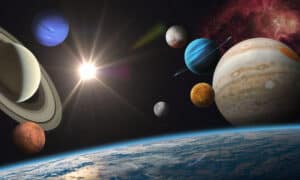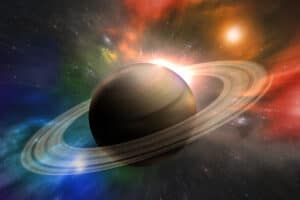Introduction
Mars is one of the most fascinating planets in our solar system for several reasons. The most interesting fact about Mars, though, is that it may have once supported life forms. Geological and topographical features of Mars point to evidence that water, which is the source of life, may have once flowed over the planet’s surface. Thus, many experts believe Mars to be the most habitable planet in the solar system behind Earth. Now, though, Mars consists of dry dust containing iron, which cannot support life but gives it a unique color. Discover the color of Mars and find out if life is possible on this planet.
Background on Mars
Mars is the fourth planet in the solar system, following behind Earth, at approximately 141.6 million miles from the sun. Furthermore, it is the seventh largest planet in the solar system, according to its size and mass. The mass of Mars is 6.417 x 1023 kilograms. The mass of all planets in the solar system is determined by gravitational pull factored into a series of equations.
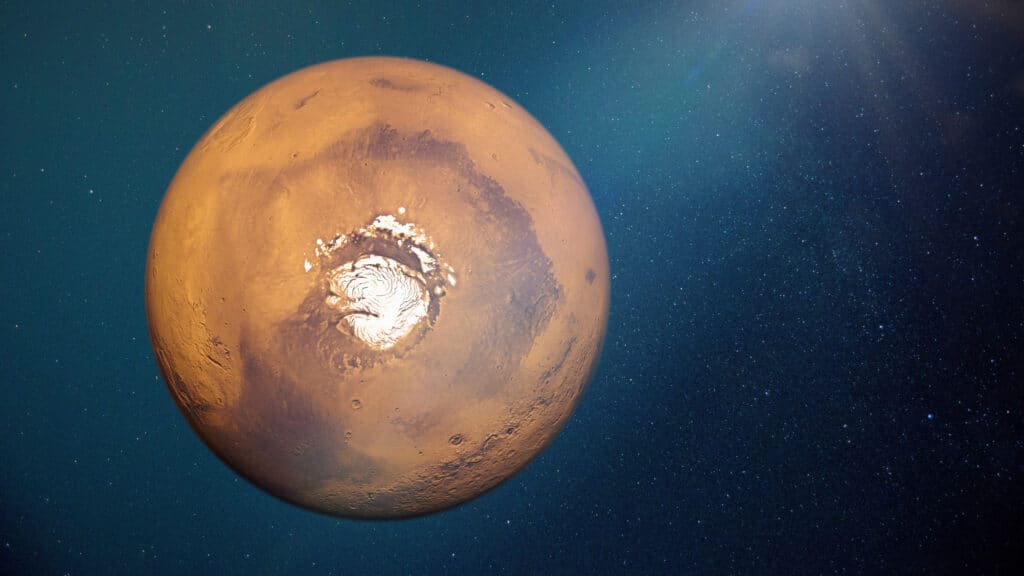
Mars is the fourth planet in our solar system.
©iStock.com/dottedhippo
Origin of the Name Mars
Mars is named after the Roman god of war. For centuries, though, other cultures gave Mars different names. In Babylon, for instance, the fourth planet’s name was Nergal, the god of death. Many associate Mars with war due to both its name and attributes. Mars is a desolate planet that seems almost apocalyptic, marked by no life and an abundance of dust.
While Earth has only one moon, Mars has two moons that orbit it. Its first moon is called Phobos, meaning “fear” in Greek. The second moon is named Deimos, meaning “terror” in Greek. Both names derive from Greek mythology. The sons of deities Ares and Aphrodite were called Phobos and Deimos. In addition, Ares is the same god as Mars; Ares is the Greek god of war. Aphrodite was the Greek goddess of beauty. Her Roman counterpart, Venus, inspired the name for the second planet from the sun, which is Venus.
Comparing Mars and Earth
In the solar system, the planets complete their revolutions and orbit differently than Earth. For example, Mars completes its day in 24 hours and 39 minutes, which is slightly longer than Earth’s 24-hour revolution. In addition, a year on Mars measures 687 Earth days, which is nearly twice the amount of time that it takes Earth to orbit the sun.
The surface area of Mars measures 1.44 x 108 kilometers squared, and the surface temperature of Mars is -82ºF. By comparison, Earth’s surface area measures 5.10 x 108 kilometers squared, and its surface temperature sits at 59ºF. Therefore, Mars is much smaller and much colder than planet Earth.
Mars is the second-closest planet to Earth; the closest planet is Venus. However, Mars’s distance does not make it invisible. Since the orbit of Mars encompasses the orbit of Earth, the planet can be seen in the sky from Earth. In addition, Mars is the only planet that can be seen through a telescope from the earth’s surface.
While Mars and Earth are different in many ways, they also share several similarities. For one, weather occurs on Mars, including wind, clouds, and some weather patterns. The planet also shares topographical features with Earth such as volcanoes and canyons. In addition, scientists estimate that Mars was even more like Earth billions of years ago than it is now. It is possible that the planet even could sustain life forms.
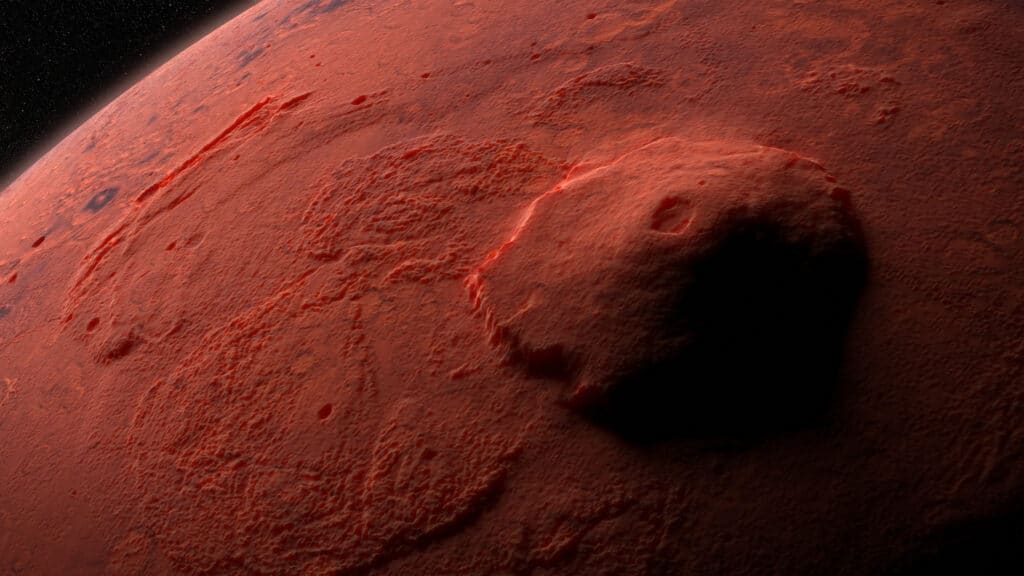
Olympus Mons, on Mars, is the biggest volcano in our solar system.
©Dotted Yeti/Shutterstock.com
What is the Color of Mars?
Mars is nicknamed “The Red Planet” because of its rusty red color. Several elements on the surface of Mars combine to create its red surface color. The rocks and soil that exist on Mars contain large amounts of iron and other elements, such as chlorine. As wind erosion turned much of the rocks and soil on Mars into dust, ancient volcanoes on the planet released iron. Thus, dust on Mars contains iron. When iron within the dust on Mars meets oxygen, a chemical reaction occurs that produces the red color many people associate with Mars.
One interesting fact about Mars is that it has the greatest and largest dust storms in the Milky Way galaxy. Dust storms throw the red dust on the planet’s surface into the atmosphere. The dust becomes caught in Mars’s atmosphere, resulting in a sky on the planet that appears red. Dust storms continually blow this dust across the planet as wind erosion creates more dust. Thus, Mars experiences a continual cycle of red dust being created and dispersed across its surface, resulting in its famous red color.
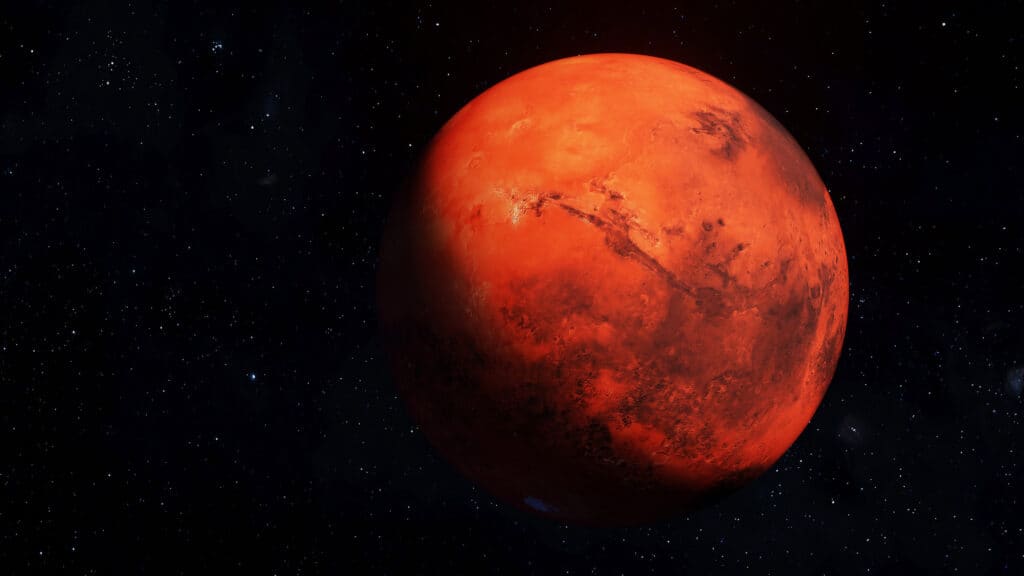
The nickname of Mars is The Red Planet.
©iStock.com/Cobalt88
Is There Life on Mars?
Billions of years ago, Mars may have had a warmer atmosphere and the presence of water in rivers, lakes, and perhaps even oceans. While the planet could have sustained life in the past, it is desolate now. Mars is too cold and too dry to support any organisms. Many refer to the planet as a frozen desert. However, some images have shown the possible presence of water on the planet. In addition, ice caps on Mars may house water or cover large bodies of water like lakes.
Some studies claim that life once existed on Mars in the form of microorganisms that came from a meteorite. These findings also assert that microorganisms may still survive in what little water remains on the planet. However, most scientists refute this claim and believe that Mars never did and still does not support any form of life.
What about the future? Most contend that Mars has the greatest chance of supporting life, even that of humans, compared to any other planet in the solar system. In addition, Mars’s appearance has changed gradually, and these alterations in appearance were once believed to be the growth and then death of vegetation. Unfortunately, this belief was refuted, too. Most scientists claim that the vegetation researchers saw was nothing more than changes in geology and topography.

Experts are unsure if life exists anywhere else in our galaxy.
©iStock.com/den-belitsky
Influence of Mars
As the planet with the most potential of supporting life other than Earth, Mars has been the fixation of scientists, authors, and screenwriters for decades. Some fiction writers that took a fascination with Mars were H.G. Wells, Ray Bradbury, and Kim Stanley Robinson. In addition, the planet has often appeared in films and through other sources of media. For instance, the novel War of the Worlds inspired a famous radio-play production that focused on Mars. The production caused many listeners to believe that aliens from Mars were coming to invade Earth.
Exploration of Mars
Toxic elements in soil, an excess of methane gas, and increased carbon dioxide in the atmosphere are all examples of factors that prohibit Mars from sustaining life. However, scientists are still working to find elements on Mars that could sustain anything from microorganisms to humans.
The late 1950s and 1960s supported an influx of space exploration, including the founding of the National Aeronautics and Space Administration, known as NASA. The incredible force behind the shift toward space exploration during this time was the space race. The space race was a competition during the Cold War between the United States and Russia to see which country would make the greatest strides in space exploration first.
While the movement was politically charged, the creation of NASA and its later missions brought new scientific advancements and achievements. In fact, many of these missions sought to discover more about the planet Mars. Most of the early missions to Mars involved spacecraft taking pictures of the planet as the spacecraft passed by. After, probes began to orbit Mars, and rovers patrolled the planet’s surface.
However, the act of putting a rover on Mars proved difficult, and many failures ensued. Eventually, though, the United States successfully put rovers on the surface of Mars. The United States and China are the only countries that have landed and successfully operated rovers on Mars. While rovers looked for evidence of life on the surface, orbiting spacecraft searched for a wider view of the planet’s features.
Now, scientists have discovered many interesting features of Mars. For instance, the planet has the largest volcanoes in the solar system. Mars also has one of the largest canyons, which measures the length of the continental United States. In addition, some seismic activity has taken place on the planet. Scientists call these vibrations “marsquakes” as opposed to earthquakes. Overall, though, experts are still unsure of whether life has, does, or will ever exist on Mars, leaving room for more exploration and debate.
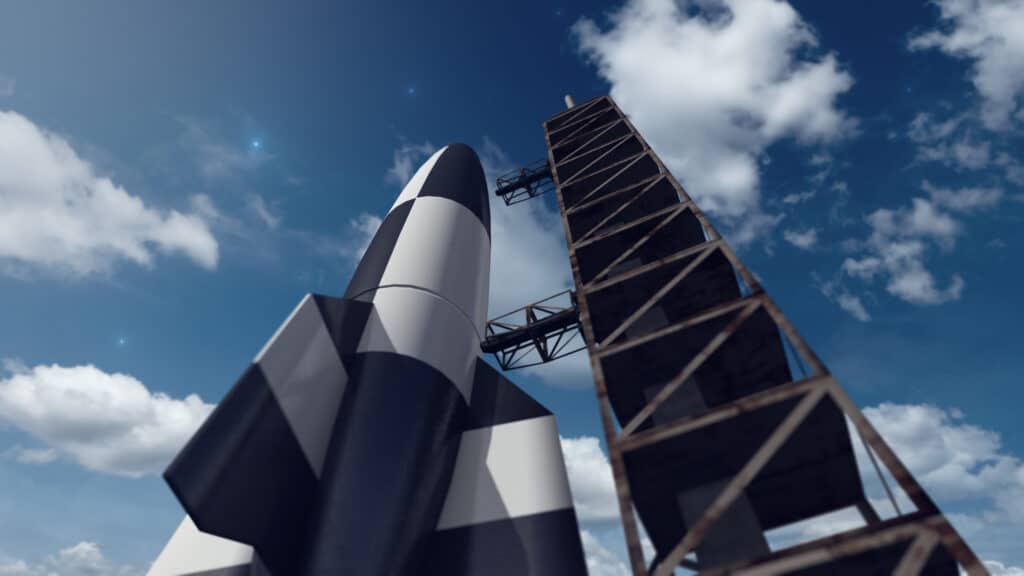
Space agencies across the world have studied the planet Mars through various missions.
©iStock.com/:fredmantel
The photo featured at the top of this post is © iStock.com/Elen11
Thank you for reading! Have some feedback for us? Contact the AZ Animals editorial team.




